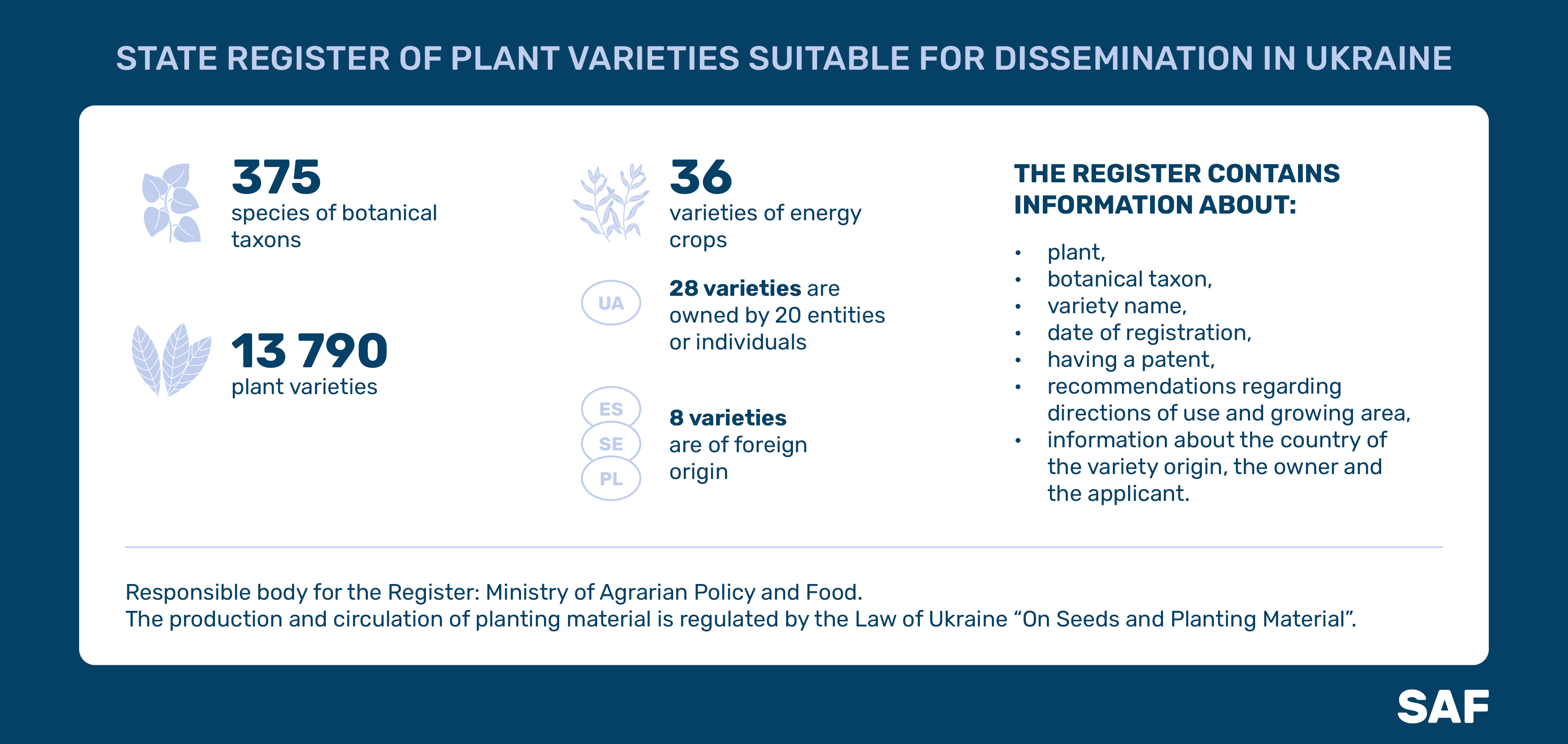In accordance with the recent update of the State Register of plant varieties suitable for dissemination in Ukraine, we have prepared an up-to-date list of energy crops varieties officially registered in the state.
The State Register of plant varieties suitable for dissemination in Ukraine (hereinafter the Register) contains an official list of varieties suitable for distribution in Ukraine. This Register is maintained by the Ministry of Agrarian Policy and Food. The Register contains information about the plant, in particular about the crop group, botanical taxon, name of the variety, date of registration, having a patent, recommendations for directions of use and growing area, as well as information about the country of the variety origin, the owner and the applicant.
The updated Register was officially published in June 2023 and contains 375 species of botanical taxons and 13,790 plant varieties. The Register includes 36 varieties of energy plants, including several types of willow, giant miscanthus, paulownia, and milling rod-shaped (Panicum virgatum L.). The varieties are owned by 20 individuals and legal entities, including research institutes of the The National Academy of Agrarian Sciences of Ukraine. A total of 8 varieties of energy crops are of foreign origin, in particular willow (Sweden – variety Wilhelm and Linnaea), miscanthus giant (Poland – variety Illinois) and paulownia (Spain – variety Kotevisa, Turbo Pro).

During 2022 and 2023, two varieties of paulownia (Energy, Lidea) and one variety of giant miscanthus (Illinois) were included into the Register. Registered varieties of plants are usually suitable for cultivation in all climatic/agricultural zones of Ukraine (Polyssia, Forest Steppe, Steppe). The efficiency of cultivation mostly depends on the quality of the plant variety, soil, sufficient moisture, frost resistance, drought resistance, resistance to pests and diseases.
The interactive table with the list of registered energy crops in Ukraine is available by the following link.
Other legislation
The production and circulation of planting material is regulated by the Law of Ukraine “On Seeds and Planting Material”. This Law does not apply to activities related to the storage, transportation and/or use of seeds and planting material for personal needs.
Planting material is put into circulation by sale only after certification. Certificates for planting material can be issued if the seeds and/or planting material belong to a variety for which information is available in the Register. At the same time, planting material can be used for sowing purposes without including it into the Register for the period of creating a planting material stock. The right to produce seeds and/or planting material is granted subject to compliance with intellectual property rights to plant varieties, which is regulated by the Law of Ukraine “On the Protection of Rights to Plant Varieties”.
Term
Energy crops/plants are annual and perennial fast-growing forest (willow, poplar) or agricultural (miscanthus, millet, sorghum, Pennsylvania mallow, etc.) crops that can be used as biomass or for the production of biofuel. The main advantage of growing energy crops is high mass productivity per unit area in a limited period of time (10-25 t/ha per year) and a long period of use (up to 30 years).
The EU experience and the current situation in Ukraine
In the EU, energy plants are grown on 117.4 thousand hectares. In particular, this indicator is 17.8 thousand hectares in Poland, 15.8 thousand hectares is used for growing in Germany. According to various estimates, only 3.5 thousand hectares of land are allocated for energy crops in Ukraine. Part of the plantations is in experimental operation, and the other part is used for industrial cultivation of willow, poplar and giant miscanthus.
Ukraine has 1 to 4 million hectares of degraded and unproductive agricultural land. These lands are suitable for growing energy plants, which can additionally not only reduce soil erosion and significantly improve its fertility, but also create a suitable ecosystem for animals in these perennial plantations.
Barriers that prevent cultivation and use of energy crops in Ukraine should be divided into several groups, in particular: legislative, administrative and financial. In particular, the key obstacles are the complicated procedure for leasing state and communal land, the high cost of the lease, the limited term of the lease, and the lack of state support.
According to the materials of the Bioenergy Association of Ukraine expert Yevhen Oliinyk.